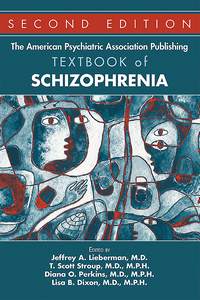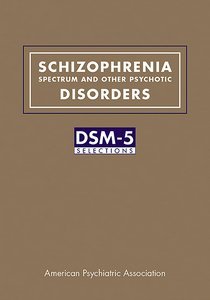Intervening Early in Psychosis
A Team Approach
View Pricing
Description
A growing body of both research and clinical experience confirms that intervening early in the progression of psychotic symptoms may delay or even prevent the movement toward more serious psychiatric illness. Young people at clinical high risk of developing psychosis, or those with a recent onset of psychosis, can benefit from a range of tailored interventions each emphasizing recovery and return to functioning.
Achieving recovery and remission for people experiencing psychosis requires a multifaceted, team-based response, and it is precisely this sort of a holistic approach Intervening Early in Psychosis: A Team Approach provides. With expert guidance on tailoring care to the needs of young people experiencing a first-episode psychosis, this book—the first of its kind to focus on the U.S. health care environment—begins with an overview of the history of early psychosis services in the United States and the development of coordinated specialty care (CSC) services.
Clinical case examples then illustrate the application of a range of evidence-based interventions, from the psychological and psychosocial—including cognitive-behavioral therapy for psychosis and supported employment and education—to peer, family, lifestyle, and technological interventions. All of these interventions are examined in individual detail, but it is the effectiveness of the interplay between them that the authors of Intervening Early in Psychosis emphasize. The collaboration of multidisciplinary stakeholders, including licensed therapists, medical providers, employment and education specialists, and peer specialists, is central to the success of the multimodal care model outlined in the guide and is examined at length.
This interdisciplinary approach is underpinned by recovery-oriented language that focuses on healing and recovery rather than disability and illness management. The book also provides an individual and family perspective on the lived experience of psychosis that underscores the importance of engaging clients and their support network in a philosophy of shared decision making.
With additional chapters that discuss advocacy issues and policy considerations when establishing CSC services and the importance of reducing the duration of untreated psychosis to optimize clinical and functional outcomes, this is the most comprehensive resource for clinicians, case workers, peer and vocational specialists, family members, and anyone else interested in expanding their knowledge of the early identification and treatment of individuals with psychotic disorders.
Contents
- Preface
- Chapter 1. Introduction: Early Intervention in Psychosis—Beachhead for Transformational Reform in Mental Health Care
- Chapter 2. Growth of Early Intervention in Psychosis in the United States
- Chapter 3. Early Detection of Schizophrenia: A Population Health Approach
- Chapter 4. Early Intervention and Policy
- Chapter 5. First-Person Accounts of Psychosis and Advocacy Work
- Chapter 6. Engaging Families and Individuals in Care
- Chapter 7. Assessment of People in the Early Stages of Psychosis
- Chapter 8. Assessment and Targeted Intervention in Individuals at Clinical High Risk for Psychosis
- Chapter 9. Medical Workup for First-Episode Psychosis
- Chapter 10. Assessing and Treating Trauma in Team-Based Early Psychosis Care
- Chapter 11. Intervening Early: A Team-Based Approach
- Chapter 12. Psychopharmacology for People in Early Psychosis
- Chapter 13. Psychotherapeutic Interventions for Early Psychosis
- Chapter 14. Substance Use and Early Psychosis
- Chapter 15. Role of Aerobic Exercise in the Treatment of Early Psychosis
- Chapter 16. Supported Employment and Education for People in Early Psychosis
- Chapter 17. Implementing Peer Support in Early Psychosis Programs
- Chapter 18. Family Intervention and Support in Early Psychosis
- Chapter 19. Suicide Risk, Assessment, and Intervention in Early Psychosis
- Chapter 20. Using Technology to Advance Early Psychosis Intervention
- Chapter 21. Inpatient Care for Early Psychosis: A Recovery-Oriented Perspective
- Chapter 22. Working With Adolescents at Risk for or Experiencing First Episode of Psychosis
- Chapter 23. Special Populations: College and University Students
- Index
Contributors
- Jacob S. Ballon, M.D.
Deborah R. Becker, M.Ed.
Iruma Bello, Ph.D.
Dror Ben-Zeev, Ph.D.
Mary F. Brunette, M.D.
Benjamin Buck, Ph.D.
Kristin Cadenhead, M.D.
John D. Cahill, M.D.
Nybelle Caruso
Mehak Chopra, D.O.
Lisa Dixon, M.D.
Robert E. Drake, M.D., Ph.D.
Maria Ferrara, M.D.
Chantel Garrett
Tresha A. Gibbs, M.D.
Shirley M. Glynn, Ph.D.
Howard H. Goldman
Michael Haines
Jill Harkavy-Friedman, Ph.D.
Debra R. Hrouda, Ph.D.
Agnieszka Kalinowski, M.D., Ph.D.
Rebecca Jaynes, LCP
Skylar Kelsven
Hyun Jung Kim, M.D.
David Kimhy, Ph.D.
Yulia Landa, Psy.D.
Carlos Larrauri
Rhoshel K. Lenroot, M.D.
Ally Linfoot
Rachel L. Loewy, Ph.D.
Sarah Lynch, LCSW
Nyamuon Nguany Machar
Walter Mathis, M.D.
Patrick D. McGorry, A.O., M.D., Ph.D.
Ryan Melton, Ph.D.
Piper Meyer-Kalos, Ph.D.
Kim T. Mueser, Ph.D.
Tara Niendam, Ph.D.
Luz H. Ospina, Ph.D.
Jessica Pollard, Ph.D.
Zheala Qayyum, M.D.
Jeffrey D. Reed, D.O.
Abram Rosenblatt, Ph.D.
Megan Sage
Tamara Sale
Kristen Sayles, M.S., R.N.
Vinod H. Srihari, M.D.
Lucia Valmaggia, Ph.D.
Gerrit van Schalkwyk, M.B., Ch.B.
Paula Wadell, M.D.
Barbara C. Walsh, Ph.D.
Jian-Ping Zhang, M.D., Ph.D.
About the Authors
Kate V. Hardy, Clin.Psych.D.,is Clinical Associate Professor in the Department of Psychiatry and Behavioral Sciences at Stanford University School of Medicine in Stanford, California.
Jacob S. Ballon, M.D., is Clinical Associate Professor in the Department of Psychiatry and Behavioral Sciences at Stanford University School of Medicine in Stanford, California.
Douglas L. Noordsy, M.D., is Professor in the Department of Psychiatry at the Geisel School of Medicine at Dartmouth, and Clinical Professor in the Department of Psychiatry and Behavioral Sciences at Stanford University School of Medicine in Stanford, California.
Steven Adelsheim, M.D., is Clinical Professor in the Department of Psychiatry and Behavioral Sciences at Stanford University School of Medicine in Stanford, California.
Related Products
Carousel Control - items will scroll by tabbing through them, otherwise arrows can be used to scroll one item at a time








